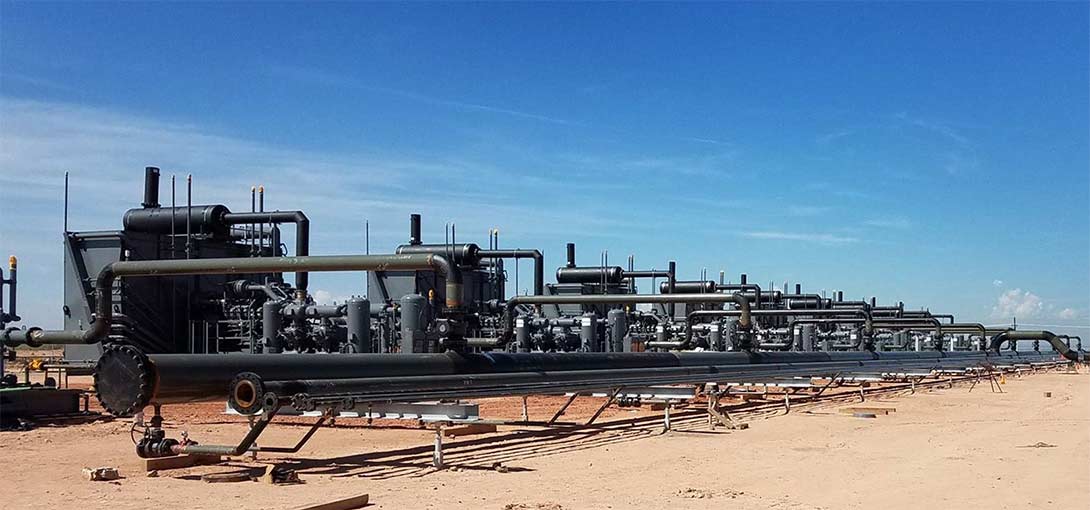
Pipeline projects are of greater importance in various industries such as oil, gas, water management, transportation, etc. These projects involve constructing and operating extended networks of pipes to support the transportation of liquids or gases over far distances. Pipelines are cost effective, efficient and essential for meeting the increasing need for energy and other vital fluids.
While numerous advantages are associated with such projects, they bring inherent risks and potential hazards. Failure to effectively manage these operations can inflict severe consequences and losses. The losses are not limited to finance but can also affect the environment and public safety. Therefore, pipeline companies need to implement a robust risk management framework.
Understanding Pipeline Project Risks
Pipeline projects are complicated and risky. They have various kinds of risks from the beginning till the end. To handle these well, it’s essential to understand them and take action to mitigate them.
Types of Risks in pipeline projects
Construction-related risks
Construction work can be dangerous because accidents can happen, equipment can break, and errors can occur in the design or implementation. Construction delays can also impact the project schedule and budget.
Environmental risks
Pipeline projects traverse through different ecosystems, making them prone to environmental hazards. Spills or leaks can result in water contamination, ecological damage, and harm to wildlife. Not complying with the regulatory aspects can also lead to fines and legal consequences.
Operational risks
Once operational, pipelines face risks such as corrosion, mechanical failures, and operational errors. These risks can cause disruptions in the supply chain, endanger personnel safety, and lead to financial losses.
Regulatory and legal risks
Pipelines are also prone to corrosion and breakdown risks. These issues can hinder the flow of supplies and even put public lives at stake.
Potential Hazards and their impact on pipeline projects
Natural disasters
Pipeline projects can face natural disasters such as earthquakes, floods or landslides. These events can harm the pipeline, disrupt work, and put people’s safety at risk.
Equipment failures and leaks
When valves, pumps or control systems fault, it can cause breaks or leaks.
Security threats
Pipelines are vulnerable to vandalism, theft or such activities.
Risk Identification and Assessment
Identifying and understanding risks are of utmost importance when managing pipeline projects. By understanding these, stakeholders can develop appropriate mitigation strategies and allocate resources effectively. Let’s look at ways to find and understand risks in pipeline projects.
Risk identification techniques
It is essential to study and analyze all the project details carefully. This will involve the following:
- Evaluating project specifications
- Conducting feasibility studies
- Identifying project-specific challenges and vulnerabilities.
Working with local communities, regulatory agencies, and industry experts will give valuable insights into potential risks. Joint discussions with stakeholders help identify risks that may not appear initially.
Identifying the potential dangers along the pipeline route and nearby areas is essential. This will take analyzing geological data, topography, seismic activity, and environmental factors. All these studies will help analyze which areas are more likely to experience disasters, leaks and other issues.
Risk assessment methodologies
There are three ways to look at the risks, which are defined as follows:
Qualitative risk assessment
Qualitative risk assessment involves assessing risks based on how much they could cause harm. Experts’ judgements and risk metrics help understand the severity of each risk.
Quantitative risk assessment
Quantitative risk assessment means helping to look at risks more objectively. This may involve using mathematical models. This approach enables the analysis of failure probabilities, consequences, and potential financial losses.
Probabilistic risk assessment
This approach employs both qualitative and quantitative approaches to assess risks. This method provides a satisfactory representation of overall project risk and helps prioritize mitigation efforts.
Risk Mitigation Strategies
Managing risks is an integral part of handling pipeline projects. By using the right strategies, potential hazards can be eliminated. Here are some ways to lessen the risks in pipeline projects:
Preventive Measures
Preventive measures focus on reducing risks before they happen. This means following strict rules and using solid materials and technology to secure pipelines. Regular checks will help catch the problems early on and prevent leaks and accidents. Training and safety programs for workers should be imparted carefully as it is the most effective way to mitigate human errors and promote safety throughout the project.
Contingency Planning
Contingency planning involves preparing for unexpected events to be able to respond to those challenged on the spot. Pipeline project companies must establish detailed emergency response plans that outline specific procedures to follow in times of need. These plans may involve evacuation, containment measures, and coordination with relevant authorities.
Communication during a crisis is crucial, as everyone needs the correct information now. This may include enabling prompt and accurate information dissemination to regulatory agencies, local communities and stakeholders.
Then, there is a need for backup plans that can reduce disruptions and maintain the project’s continuity.
Insurance and Risk Transfer Options
Some insurance companies are experts in the energy industry and can offer policies covering the specific risks of pipeline projects. Sharing the risk with external entities such as government agencies can also provide help and resources during emergencies.
Insurance and risk transfer mechanisms are like extra protection for pipeline projects if a mishap occurs. Liability insurance covers financial damages, environmental remediation, and third-party claims.
To make these projects safe, taking preventive measures, planning for unforeseen circumstances, and having insurance and risk transfer options are essential. This will provide an absolute setup or framework for mitigating the risks. But remember, it is essential to keep reviewing and updating these strategies as new technologies, regulations, and industry evolve. Focusing on these safety standards, it would be easier to become proactive at managing the risks.
Conclusion
It’s essential to employ robust identification and counter-management technique at each stage of the pipeline construction and operation process. These techniques may involve detailed scoping, stakeholder consultation, and hazard mapping and assessment. Partner with Tindol construction company, specializing in pipeline construction service. Their services adhere to the highest safety standards. Access the industry’s best practices by collaborating with Tindol Construction; visit their site to consult.





